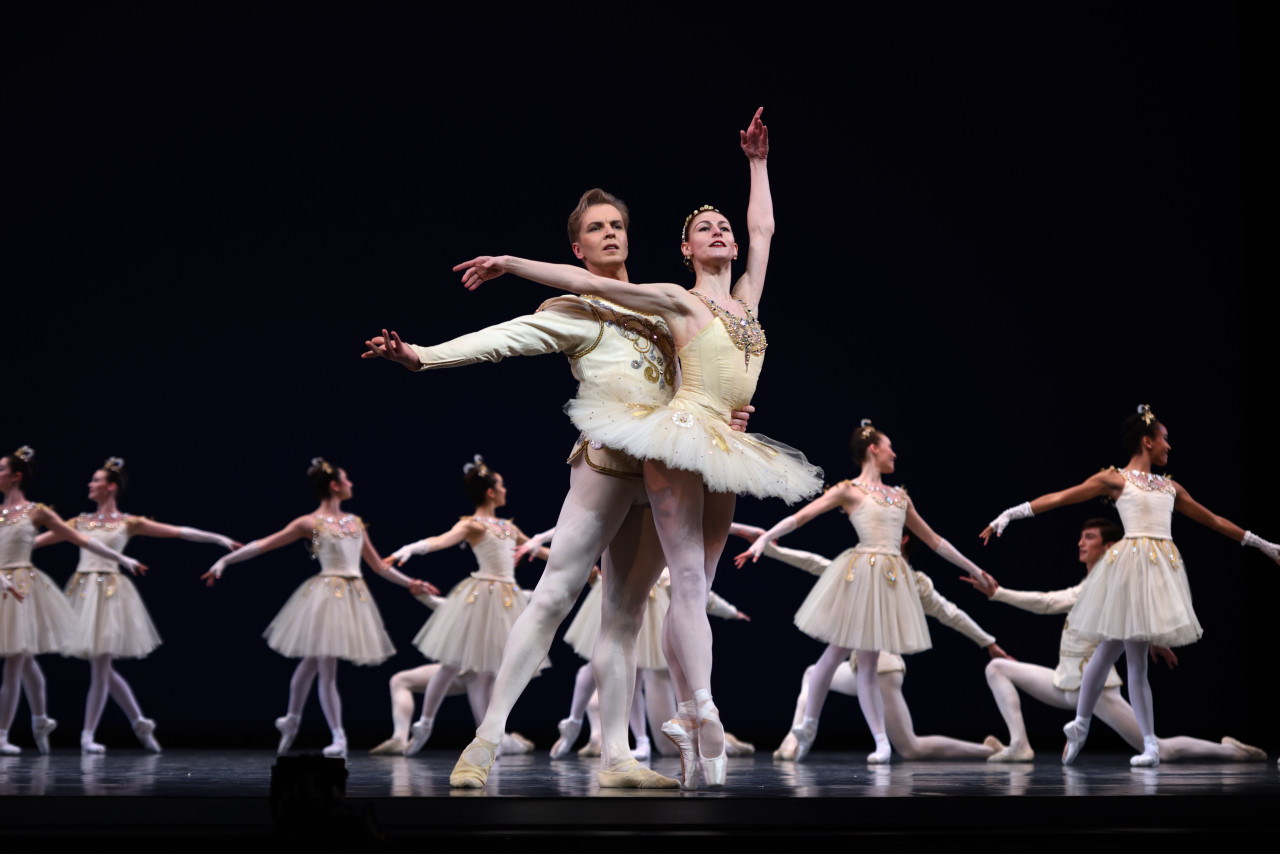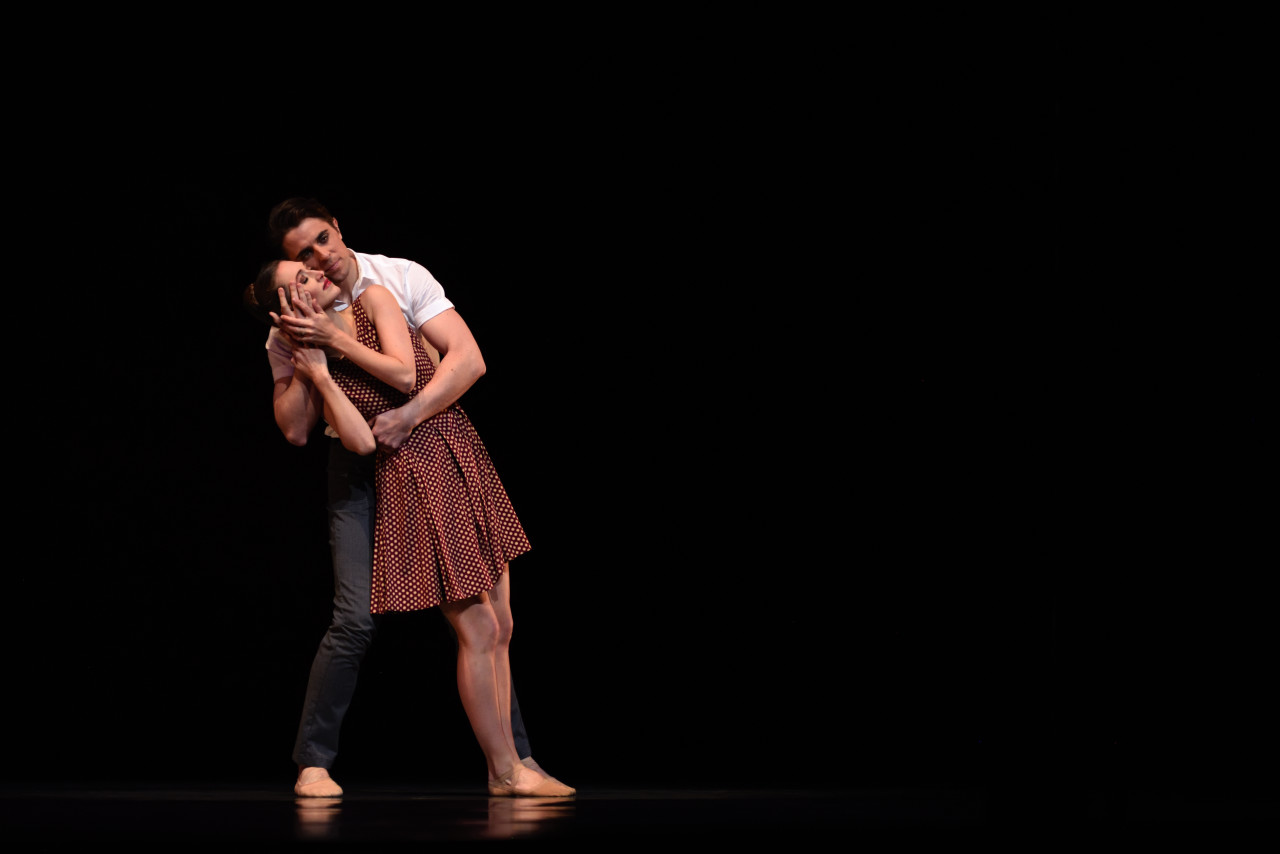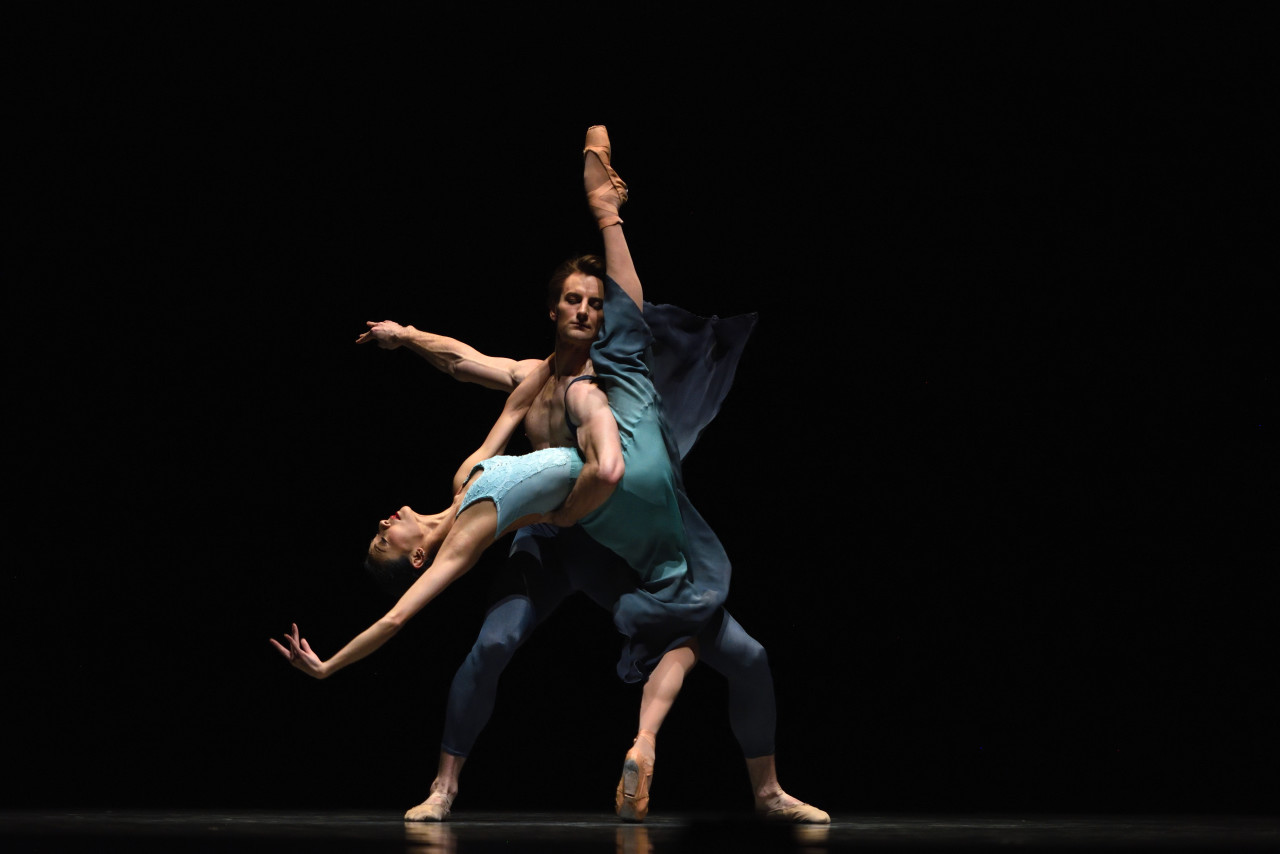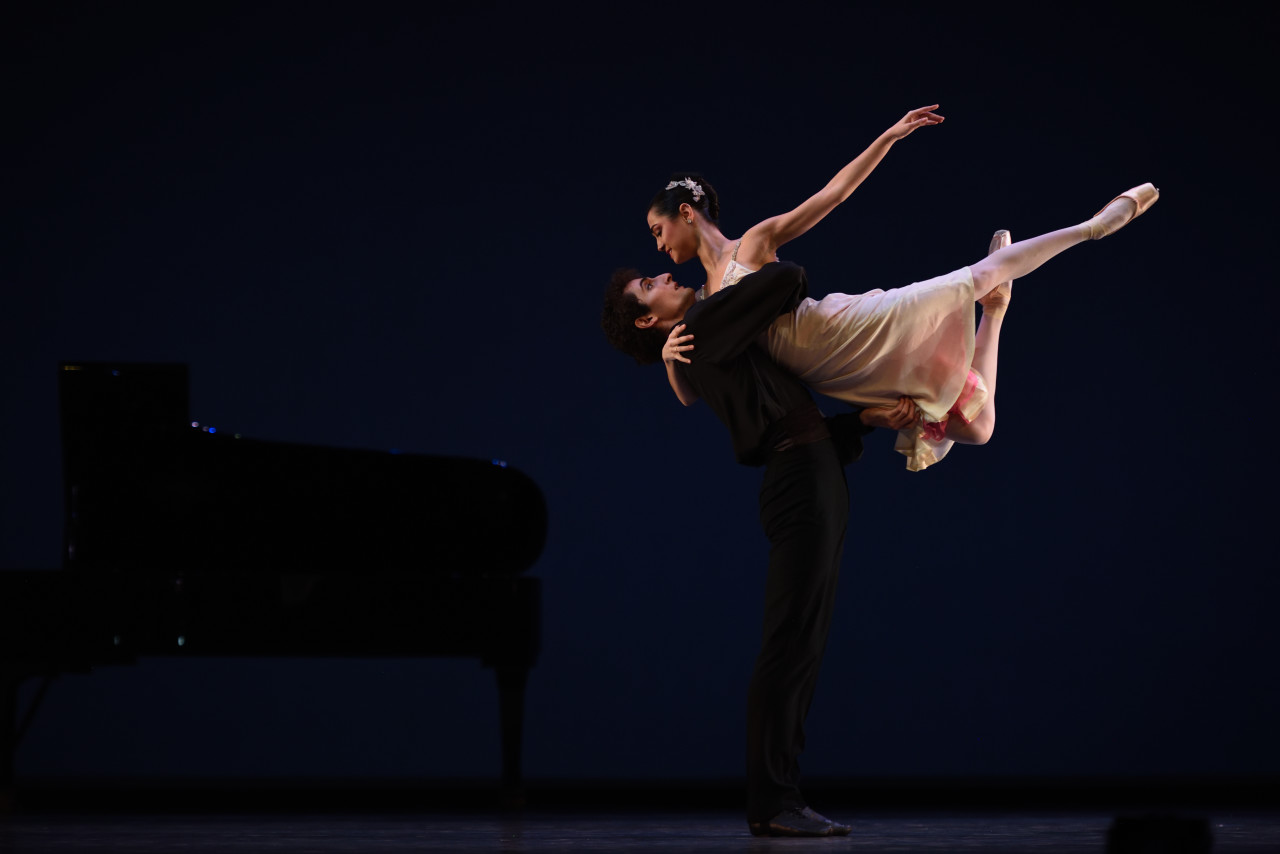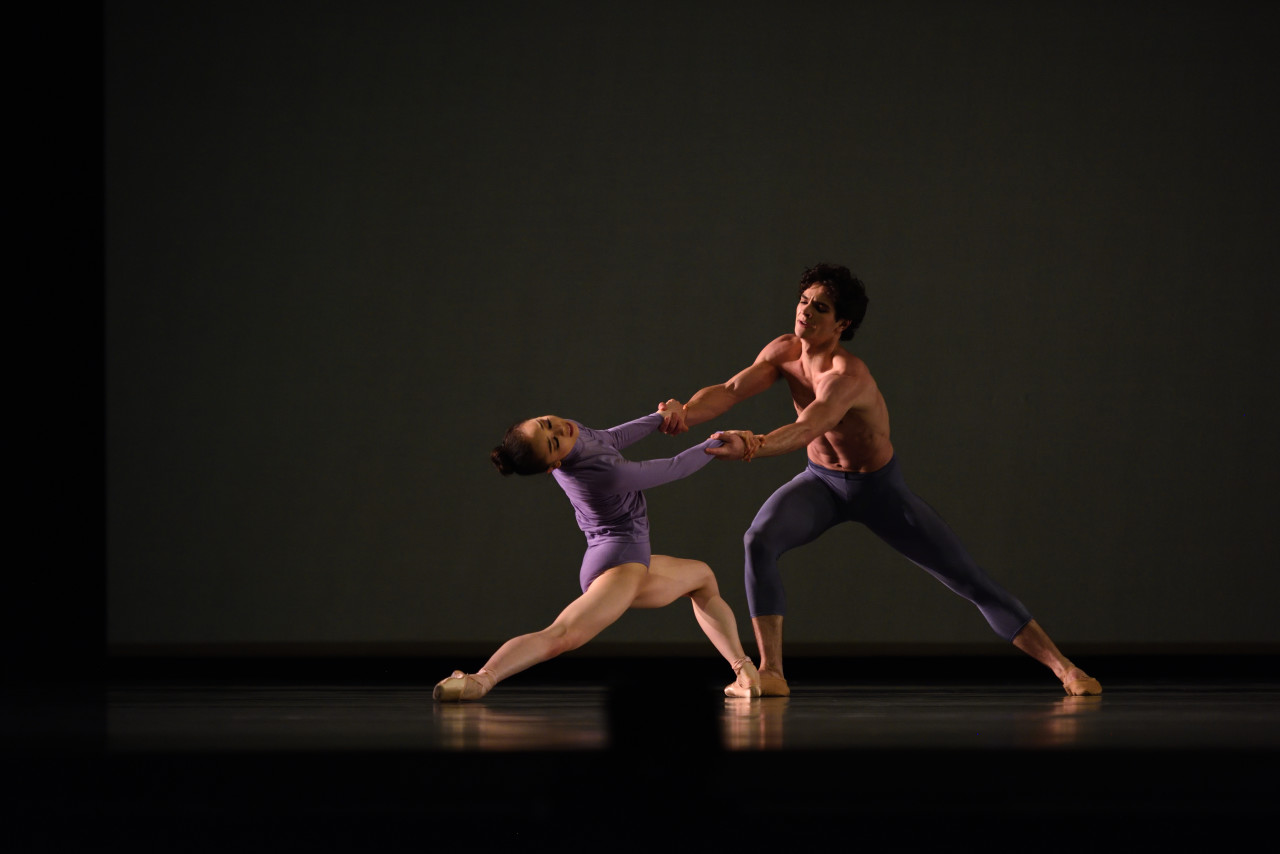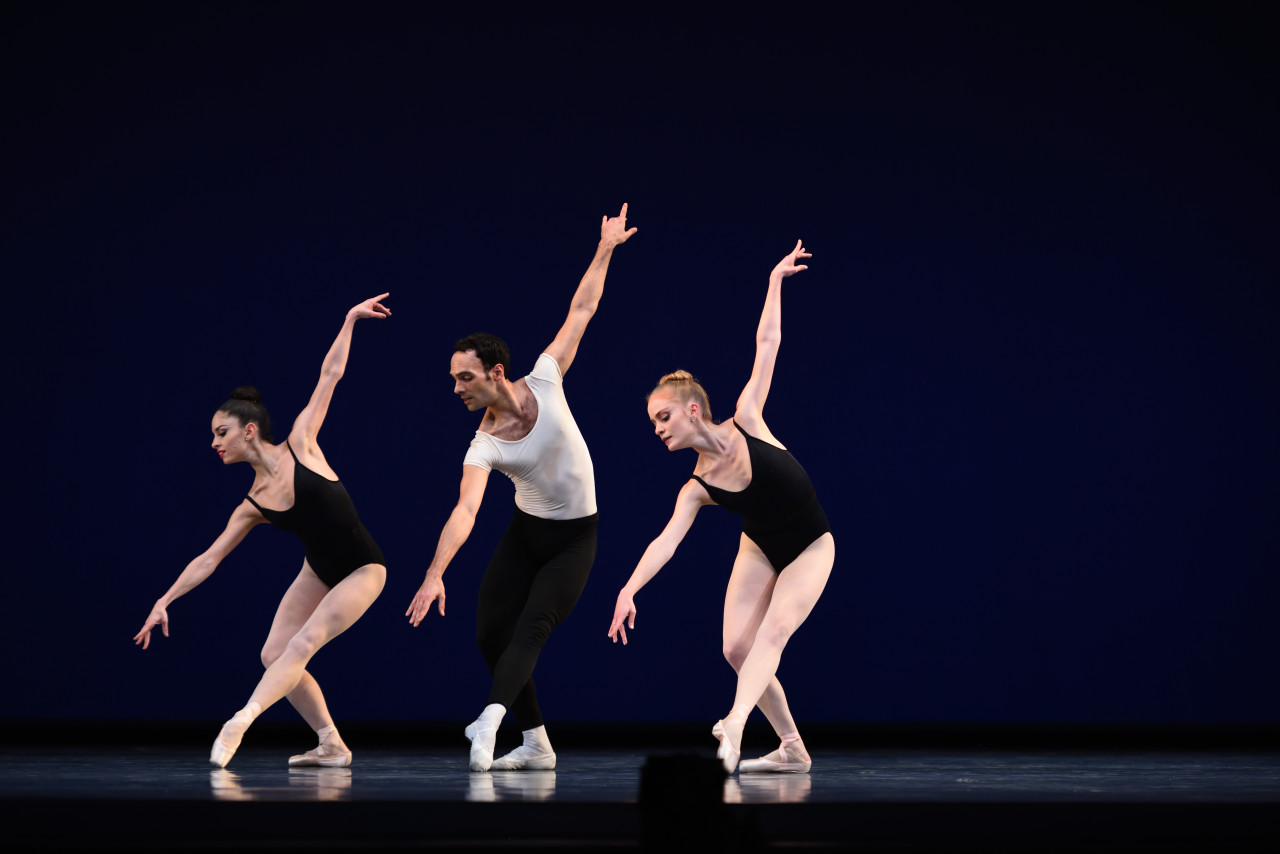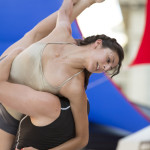Ballet galas are typically a smorgasbord of sugary, easily digestible desserts, curated for the short attention spans of the haute coutured set who are in between very important parties. The level of dancing is often variable, since galas are one-night stands and the company is preoccupied with rehearsing more substantive fare. San Francisco Ballet’s 84th season opening gala on Jan. 19th did not entirely break with these norms, but it offered many sparkling moments and two memorable world premieres by Trey McIntyre and Benjamin Millepied.
The performance opened with the national anthem and closed with the grand “Polonaise” from George Balanchine’s Diamonds. Perhaps it was the timing, on the eve of an inauguration that represents anathema to the majority of San Franciscans, that stirred the audience to sing with uncommon fervor, many hands on hearts. No one took a knee. Diamonds on the other hand was singularly unpolished, the ensemble lines ragged, anxiety registering on many faces underneath enormous tiaras. Nothing short of a nuclear meltdown onstage would have perturbed the regal Sofiane Sylve, however. None of the usual rules of friction or gravity seemed to apply to her, particularly when partnered by the princely Tiit Helimets.
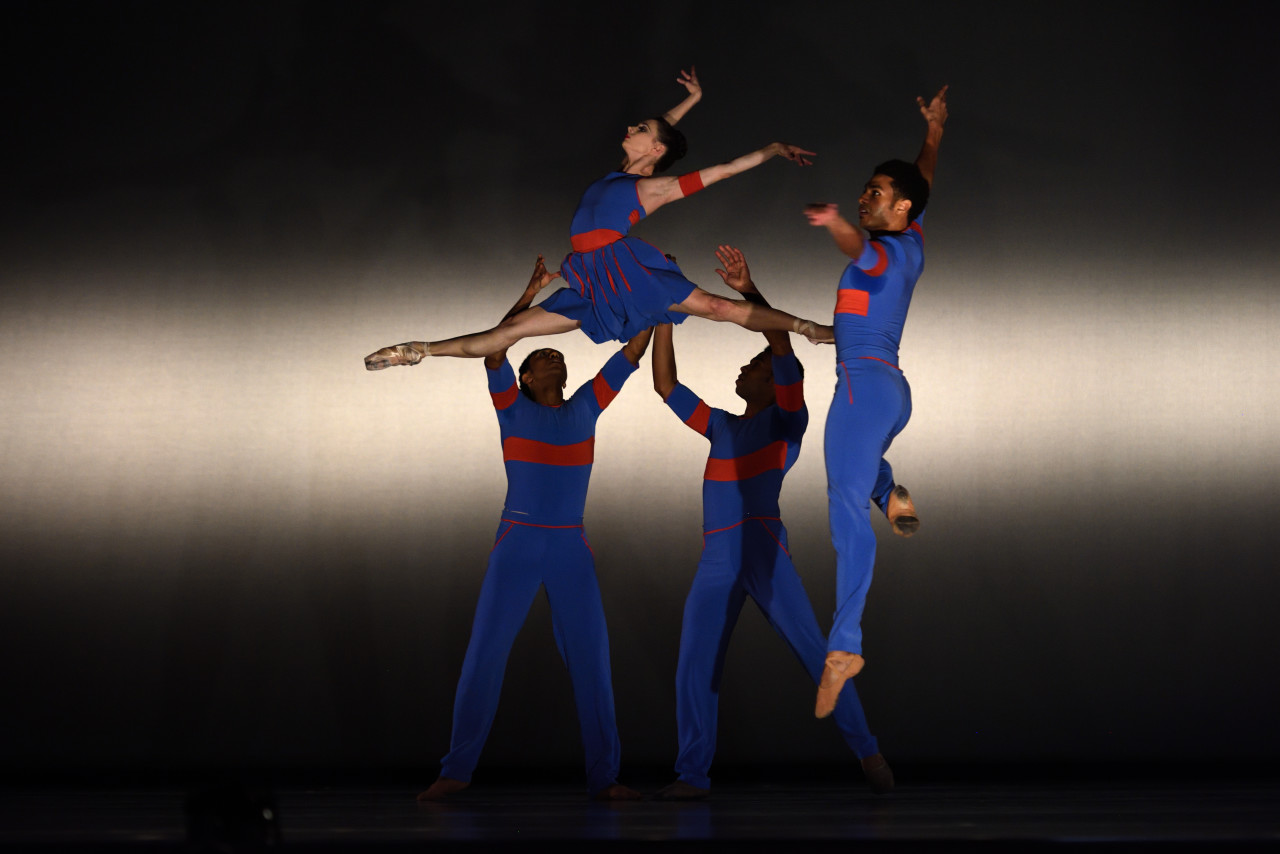
Anthony Vincent, Daniel Deivison-Oliveira, Francisco Mungamba and Maria Kochetkova in Benjamin Millepied’s The Chairman Dances (Photo: Erik Tomasson)
Millepied propelled a highly charged ensemble through the mercurial soundscape of The Chairman Dances, an outtake from John Adams’ opera Nixon in China. In the engrossing provocations, there was thankfully no hint of orientalism. Though if you were looking you might find oblique references to the infamous Gang of Four in the quartet that gamboled on and off – captained by the fearless Maria Kochetkova, who presumably represented the diabolic Jiang Qing, Mao Zedong’s actress wife. Toward the end of the 13-minute caper, the stage was stripped bare of cyclorama and wing drapery to reveal the bare bones of the stage with its lighting towers (possibly a reference to the exposing of the Gang of Four and their role in the Cultural Revolution.) The ensemble conquered every challenge thrown at them by Millepied, and Kochetkova was in her element, by turns frivolous, scheming, and exultant.
McIntyre, whose disbanding of his eponymous company in Boise, Idaho, in 2014 was cause for mourning in the dance world, united Luke Ingham and Sarah Van Patten (in great form post-maternity leave) in an unconventional and sassy duet set to three vintage oldies. This pairing was indisputable proof that chemistry is key in a pas de deux; not even the snazziest choreography can save a couple who don’t dance like they belong together.

Lorena Feijoo and Wei Wang in the pas de deux from Scarlett’s Promenade Sentimentale.
(Photo: Erik Tomasson)
The same held true for the company premiere of the ecstatic pas de deux from Liam Scarlett’s Promenade Sentimentale in which Wei Wang looked like he’d dedicated his life to ballet just to be able to dance with Lorena Feijoo. She returned the compliment. This is a ballerina in the gloaming of her career, her technique slightly labored at moments, her lines no longer hitting extremes. Yet she danced with vitality, imbued certain steps with mystery, and attacked others, all with a purposefulness that eludes many dancers in their prime.
And true, too, for Frances Chung and Vitor Luiz in the “Purple” episode from James Kudelka’s Terra Firma. The drone of Michael Torke’s tango-gone-rogue and the constricted movement combined to grate at first but soon entangled us in its spell. Chung and Luiz danced with go-for-broke commitment, her nose-dives into arabesque like a dagger to the heart (ours, not his).
True yet again for Vanessa Zahorian and Taras Domitro in the crowd-pleasing Flames of Paris pas de deux. Stripped of context from its libretto of two young revolutionaries in love, the duet becomes just an excuse for pyrotechnics, but the jubilant pair with nerves of steel made us care deeply about their ‘anything you can do I can do better (and on pointe)’ repartee.
In contrast, Stanton Welch’s overwrought duet for the ever-glamorous Yuan Yuan Tan and Aaron Robison (from La Cathedrale Engloutie), failed to ignite a chemical reaction despite Tan’s dogged emoting and Robison’s bare chest. The standout was pianist Natal’ya Feygina.
And notwithstanding the considerable charms of Mathilde Froustey, Carlo DiLanno danced as if he would rather be alone in Helgi Tomasson’s Valses Poeticos. Heavenly Granados in the inspired hands of pianist Ronny Michael Greenberg and Tomasson’s ravishing choreography could not move him. Froustey should not take it personally, since DiLanno didn’t seem too keen on Maria Kochetkova either in The Chairman Dances. Admittedly, she is too short to be dancing with him; that pairing was awkward. But ample delights were to be found in Kochetkova’s daredevilry and Froustey’s coquetterie.
Two recent arrivals made a more graceful pair in Myles Thatcher’s Foragers. Natasha Sheehan and Angelo Greco reprised this sensuous and athletic snapshot of youthful attraction, with which they won the Erik Bruhn Prize for young talent in Toronto last November. On the vast stage of the War Memorial Opera House, Greco was a powerful presence while Sheehan left a fainter trace.
The only solo of the evening belonged to the gallant Joseph Walsh, currently the most versatile of the company’s principal men. On gala night he incarnated the insouciant Boogie Woogie Bugle Boy (of Company B). Although he may not dance with the same weightiness as Paul Taylor’s own dancers, the choreography fit him like a glove.
Balanchine’s Agon fit the trio of Jaime Garcia Castilla, Dores André and Sasha De Sola like a glove, too. They danced it cleanly but without the whimsy, the spiky Stravinskian edges, the touch of arrogance that sends shivers down the spine. The magnetic De Sola possesses a natural spark but in Agon she channeled Gwen Verdon rather than Laura Palmer.
The many baubles tossed from the stage that evening were by way of “thank you” for the unprecedented success of the gala’s fundraising effort, which grossed $2.8 million.

